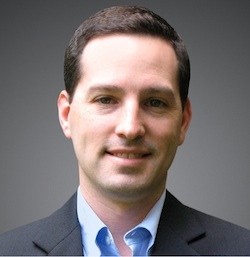Data centers have come to symbolize trading floors of the 21st century, with firms wanting to be co-located with exchange matching engines in order to eliminate the last possible millisecond of latency.
But low latency is only one driver of data center usage. Equally, if not more important, is the need to maximize efficiency in middle and back office processing, and that’s leading firms to offload such services to cloud-based providers.
Demand for cloud computing in capital markets is increasing as firms seek to lower IT costs, provide scalable computing capacity, and free up resources to support new technologies and revenue-generating products, according to research firm Celent.
Many leading financial institutions, including Morgan Stanley, Citigroup, Bank of America/Merrill Lynch and State Street have deployed private clouds, according to Celent.
Celent estimates that spending for cloud computing in capital markets worldwide will grow to $2.8 billion in 2013, up from an estimated $2.3 billion in 2012.
“A few years ago, enterprises were skeptical about adopting cloud technology due to security concerns,” said Jeffrey Kaplan, managing director of THINKstrategies, a cloud strategy consultancy. “Since then, vendors have addressed concerns head-on by including state-of-the art security technology as part of the SaaS platform. There are now legions of successful enterprise cloud customers worldwide and the market continues to expand.”
High Performance Infrastructure
Of most interest for high-performance infrastructure managers “are the managed service providers, particularly network providers such as 7Ticks, GuavaTech and Options,” said Shawn Kaplan, general manager for financial services at data center provider Telx. “These providers seek out the highest performing communication routes and are able to share those costs across many trading firms. Many of these firms have evergreen policies which state when a higher performance connection becomes available it will become available automatically.”
Deep Value, a developer of high performance trading algorithms, has successfully deployed a private cloud hosted at Telx’s 111 8th Ave. data center in Manhattan, and more recently has expanding to Telx’s data center at 100 Delawanna Ave. in Clifton, N.J.
Deep Value has notable analytical and computational research capabilities, which require running complex market and strategy simulations on hundreds of terabytes of data.
To compile these simulations requires splitting the workload across hundreds of machines running in parallel.
“Previously, we had hosted these computations and storage in a public cloud, but as we moved forward, we decided that setting up a private cloud would offer us a better return on investment,” said Paul Haefele, managing director of technology at Deep Value.
Cloud Service Models
The three major cloud service models are Software-as-a-Service (SaaS), Platform-as-a-Service (PaaS), and Infrastructure-as-a-Service (IaaS).
Demand for PaaS and IaaS in capital markets is driven by demand for outsourcing IT operations and infrastructure, and for application development testing and Big Data analytics.

Matt Benati, vice president, global marketing Attunity
“There are many ways to save money in the cloud, but some of the chief areas we see are on infrastructure cost savings,” said Matt Benati, vice president of global marketing at Attunity, whose CloudBeam service helps firms extend and scale data center operations to meet Big Data demands through the cloud.
“For starters, a good cloud solution will feature a ‘no capital expenditure’ model – you can simply pay as you go,” Benati said. “However, with that said, some models do require an expensive hardware buy, so be careful of these types.”
According to Celent, independent software vendors will make their middle and back office applications available in a Saas model.
SunGard, for example, has released a new version of Asset Arena InvestOne, a global accounting system for asset managers, custodian banks and third party administrators, which provides on-demand computing capacity to help meet customers’ growing requirements. SunGard’s proprietary cloud technology currently supports nearly 75% of Asset Arena InvestOne customers.
The new release help firms effectively manage regulations like the International Financial Reporting Standards (IFRS), which is demanding stronger control over accounting practices, as well as expand the services and products they offer in multiple geographies.
“The enhancements help customers operate more efficiently, adapt to new requirements and navigate regulatory shifts without disruption to their core business,” said Gail Schulman, chief operating officer of SunGard’s Asset Arena InvestOne business unit.
Attunity CloudBeam is subscription-based, enabling users to move data to, from or between clouds without the need to invest in additional hardware.
Since the elastic nature of the platform enables scaling up or down according to usage, a worst-case scenario can be accommodated without capital investments and ongoing maintenance. “In the age of Big Data, where data volumes and velocities are exploding, this is a very important capability,” said Benati. “Additionally, because solutions like Attunity CloudBeam are fully-managed, there is no need to hire consultants or additional IT labor with advanced skills.”





